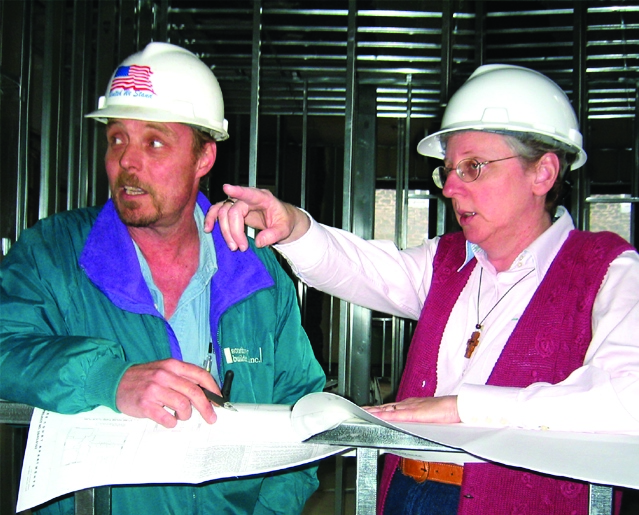Because they have sisters gifted at planning and assessment, the Sisters of St. Francis of Assisi were able to make informed decisions and make the best of use of the assets they had. Read more in our retirement series here.
Towards the end of the 1980s, said Sr. Ellen Carr, the Franciscan Sisters of Baltimore had two big decisions to consider.
Given their decreasing numbers and concern about the viability of their city ministries, it seemed appropriate to consider merging with another order. In 2001, the community became part of the Sisters of St. Francis of Assisi, headquartered in Milwaukee, Wisc.
They did not move, though, and the Baltimore sisters increasingly were concerned about the condition of the 50,000-square-foot convent, which lacked a sprinkler system and had drafty windows and spotty air-conditioning.
An adjacent building added another approximately 8,000 feet of space.
The sisters’ roots run deep in area history. In 1917, they started a residence for African-American orphans and when that closed, they began a special-education school on their 11-acre campus.
With the school gone, it was clear that they had much more space than they needed. When merger talks got serious, said Carr, the Baltimore Franciscans assured their sisters in Milwaukee that they were taking steps to plan for the future, both of their buildings and of their increasingly frail population of elderly sisters.
With the help of an advisory committee, a $500,000 planning and implementation grant from National Religious Retirement Office and a lot of dialogue with their community, a plan emerged appropriate both to the setting and to the sisters’ historic association with the city.
A wing of their former motherhouse, the order decided, could be turned into assisted living facilities for the nuns who needed assistance. The rest of the residence would be torn apart and reconstructed into apartments and townhouses for low-income residents by Homes for America, a nonprofit housing developer based in Annapolis, Md. Clare Court, as the mixed housing, intergenerational development is called, has room for families, seniors and people with developmental disabilities.
Eight sisters are currently in the assisted living wing, with 10 others living independently in Clare Court apartments. Though in the past they have had to send sisters to a skilled nursing facility run by the Mercy Sisters, that hasn’t happened in years, said Carr.
“We come together to say Mass in the chapel and for meals in the convent area,” said Carr. “One of the main things we wanted to preserve was the interconnectedness of the convent area sisters [in assisted living] with the more independent sisters.” Though they still own most of the grounds, the sisters have been part of the Clare Court community for almost a decade. Residents know where to find Carr, she said: “I’ll get someone knocking on the door at 10 o’clock at night because they have a problem.”
“We’d been on the grounds without anyone else here for quite some time; it was quite an adjustment,” said Carr, who is in charge of convent operations and is currently helping to supervise the renovation of the historic “Stone House” attached to the original convent building.
But the change has enriched the lives of the sisters who live on the grounds, she said, pointing out that one of the residents had been an orphan at the original school, and another currently helps the sisters as a housekeeper.
Carr, in her early 60s, had been instrumental in helping to recruit funds from foundations and individuals for the convent renovations, which ended up costing close to $3 million. In the process, her team also strengthened the community’s endowment. Work on the “Stone House” (another fundraising project) was expected to be done by Thanksgiving.
But she and her community continue to monitor the situation. “As a congregation, we continue to look at the needs of our sisters,” she said, “and where and how they might best be met.”
[Elizabeth Eisenstadt Evans is a religion columnist for Lancaster Newspapers, Inc., as well as a freelance writer.]



